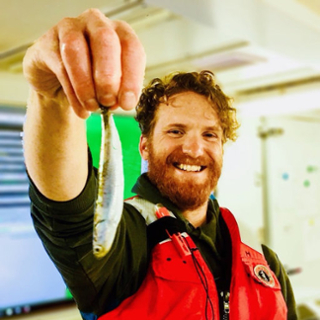 Postdoctoral associate Brendan Turley from the Rosenstiel School of Marine and Atmospheric Sciences (RSMAS) is hard at work researching the oceanographic influences of red tide off the west coast of Florida. He is collaborating with National Oceanic and Atmospheric Administration (NOAA) scientists to better understand red tide and hypoxia, which is low to no dissolved oxygen in a body of water. He explains, “Red tides, which are a type of harmful algal bloom in water, are caused by phytoplankton that start offshore and then move toward the coast.” The organism produces a toxin that can kill marine animals and cause respiratory distress to beach goers when the cells are broken open by wave action.
Postdoctoral associate Brendan Turley from the Rosenstiel School of Marine and Atmospheric Sciences (RSMAS) is hard at work researching the oceanographic influences of red tide off the west coast of Florida. He is collaborating with National Oceanic and Atmospheric Administration (NOAA) scientists to better understand red tide and hypoxia, which is low to no dissolved oxygen in a body of water. He explains, “Red tides, which are a type of harmful algal bloom in water, are caused by phytoplankton that start offshore and then move toward the coast.” The organism produces a toxin that can kill marine animals and cause respiratory distress to beach goers when the cells are broken open by wave action.
One of the projects Brendan is currently working on includes examining a variety of data sources to understand the red tide interactions. These sources include but are not limited to: fisheries landings, red tide samples, research cruise data, meteorological data and satellite observations. He recognizes that working with other researchers within these sources has enriched his work. “Having their perspectives and their diverse set of skills and backgrounds as I collected data has assisted greatly with my findings immensely,” he stated.
“What makes me so passionate about my work is that I love applied research. It’s satisfying to work on a problem that is vexing a community in the hopes of bringing clarity and a path to resolving it,” Brendan goes on to say. Even with being in the early stages of the hypoxia research, he has a few publications that are under peer review. He hopes that his work in this pilot project will lead to a regional network of data collection and strengthen connections across research and economic sectors.
